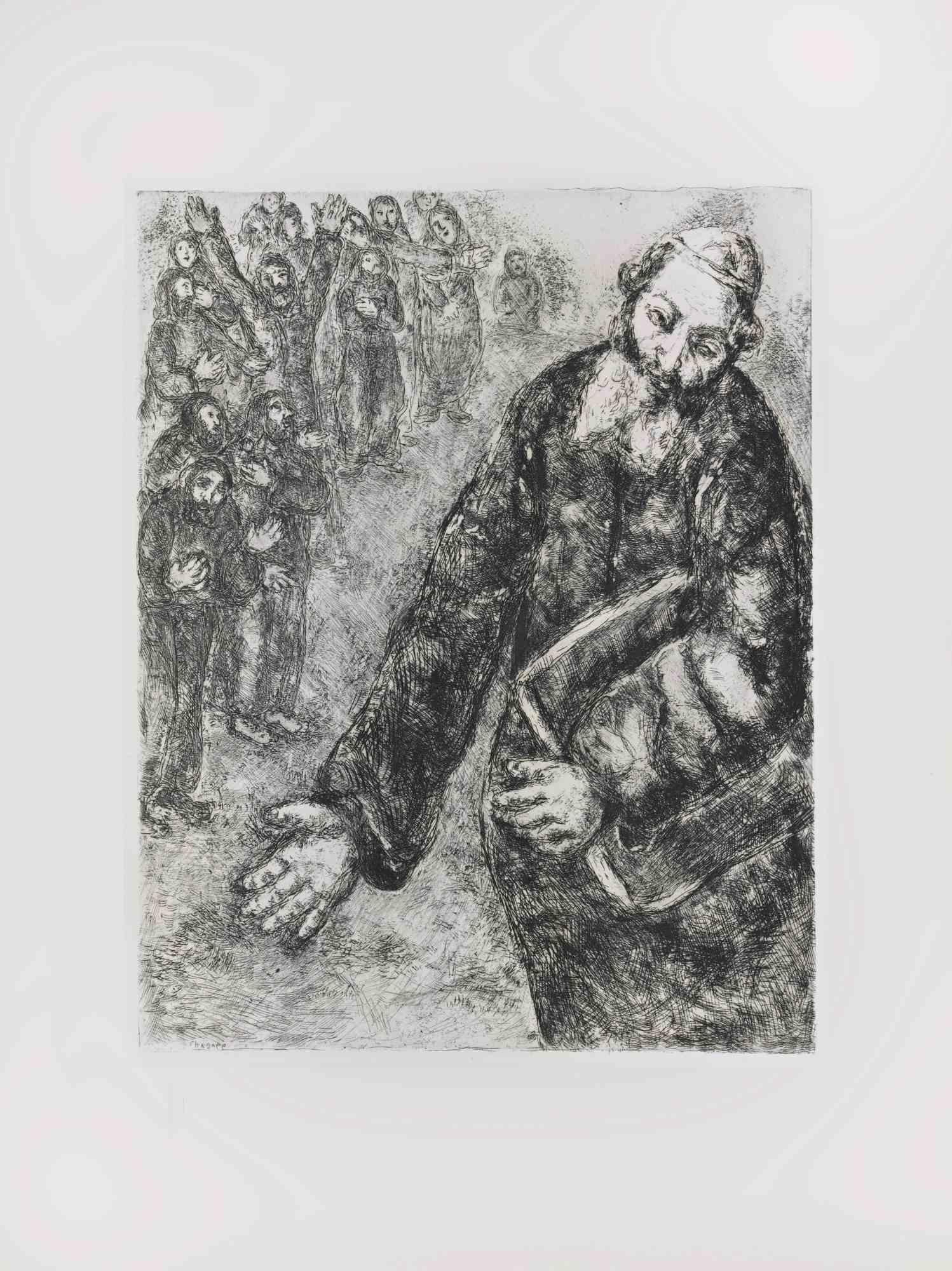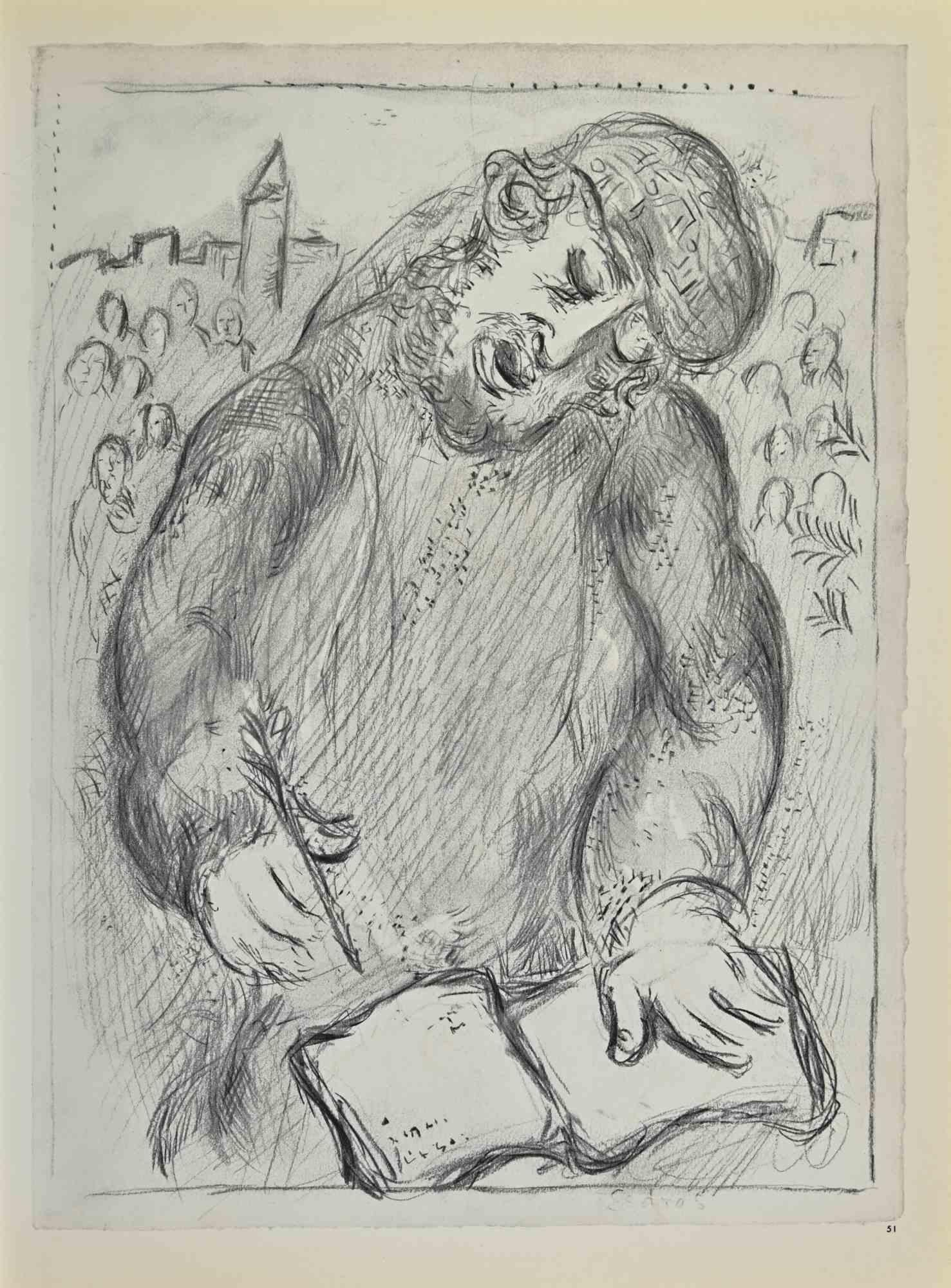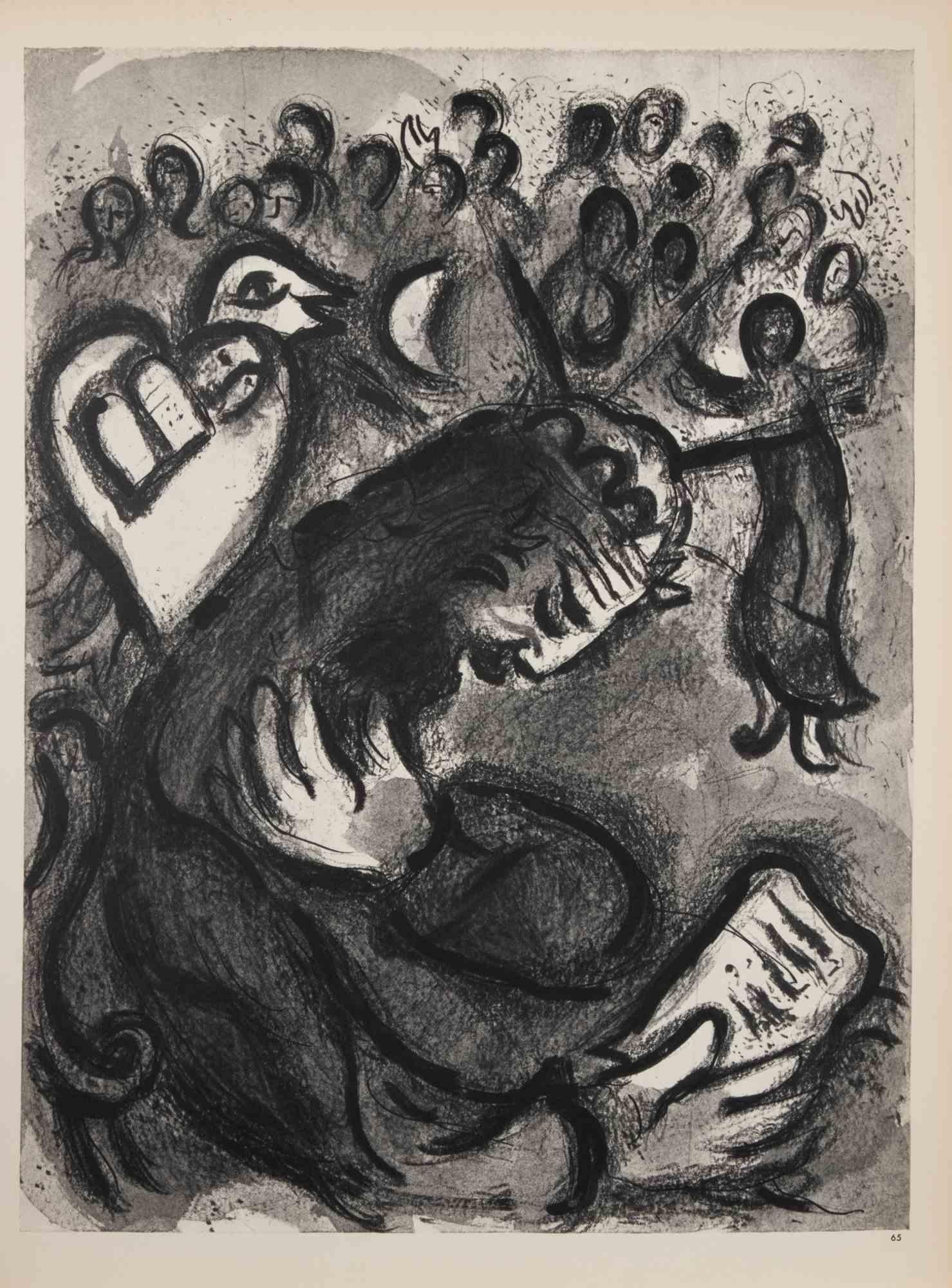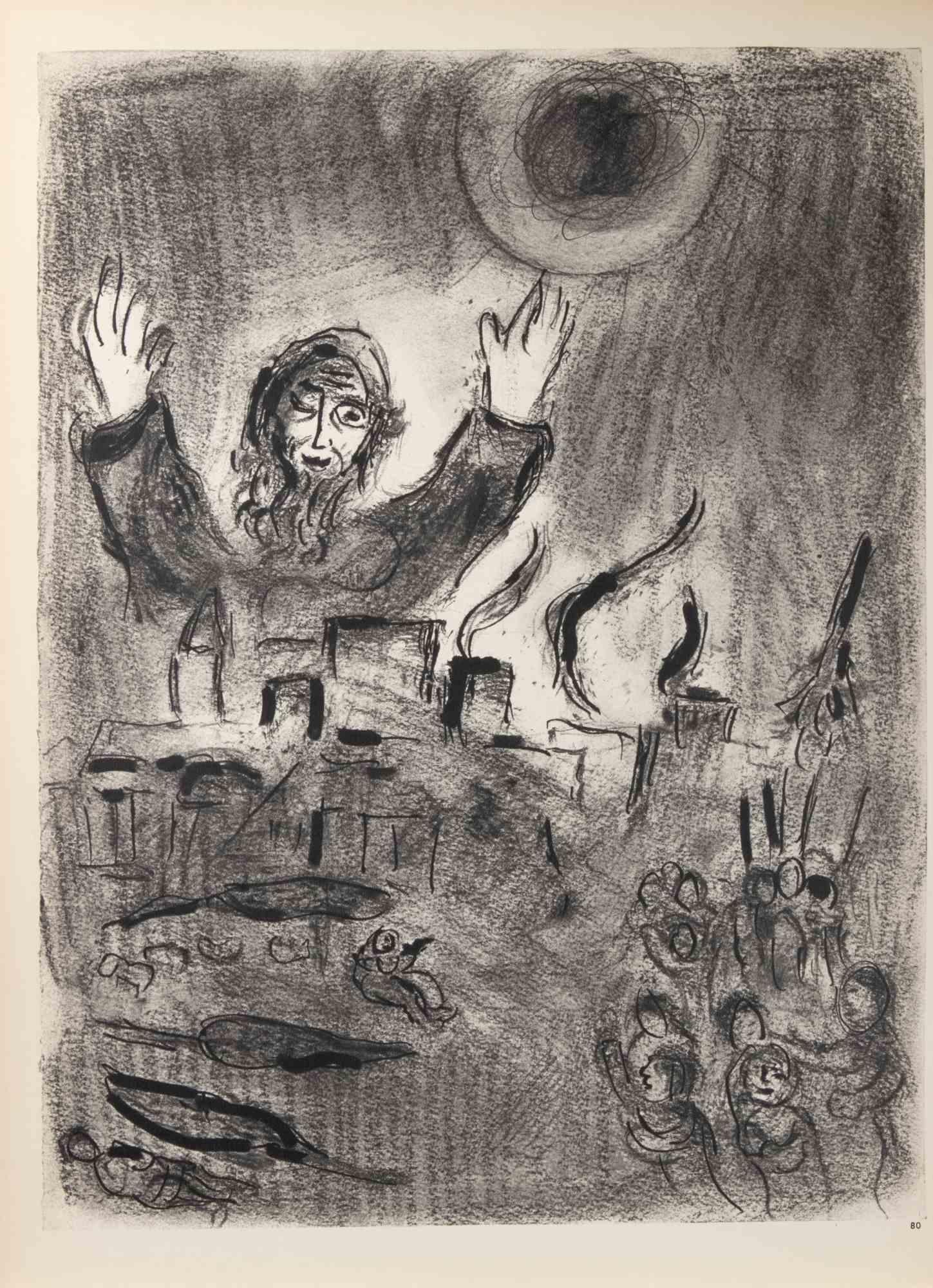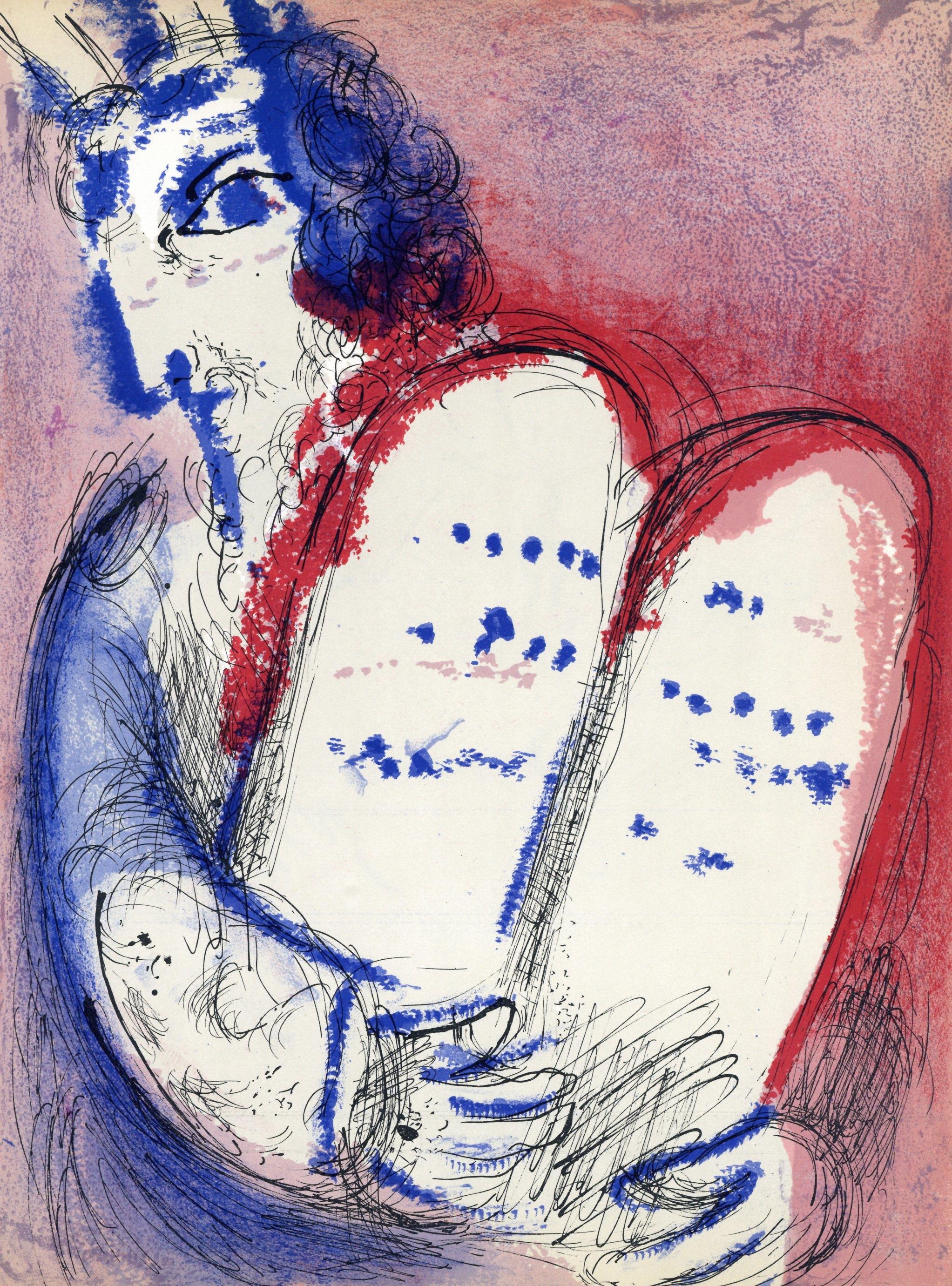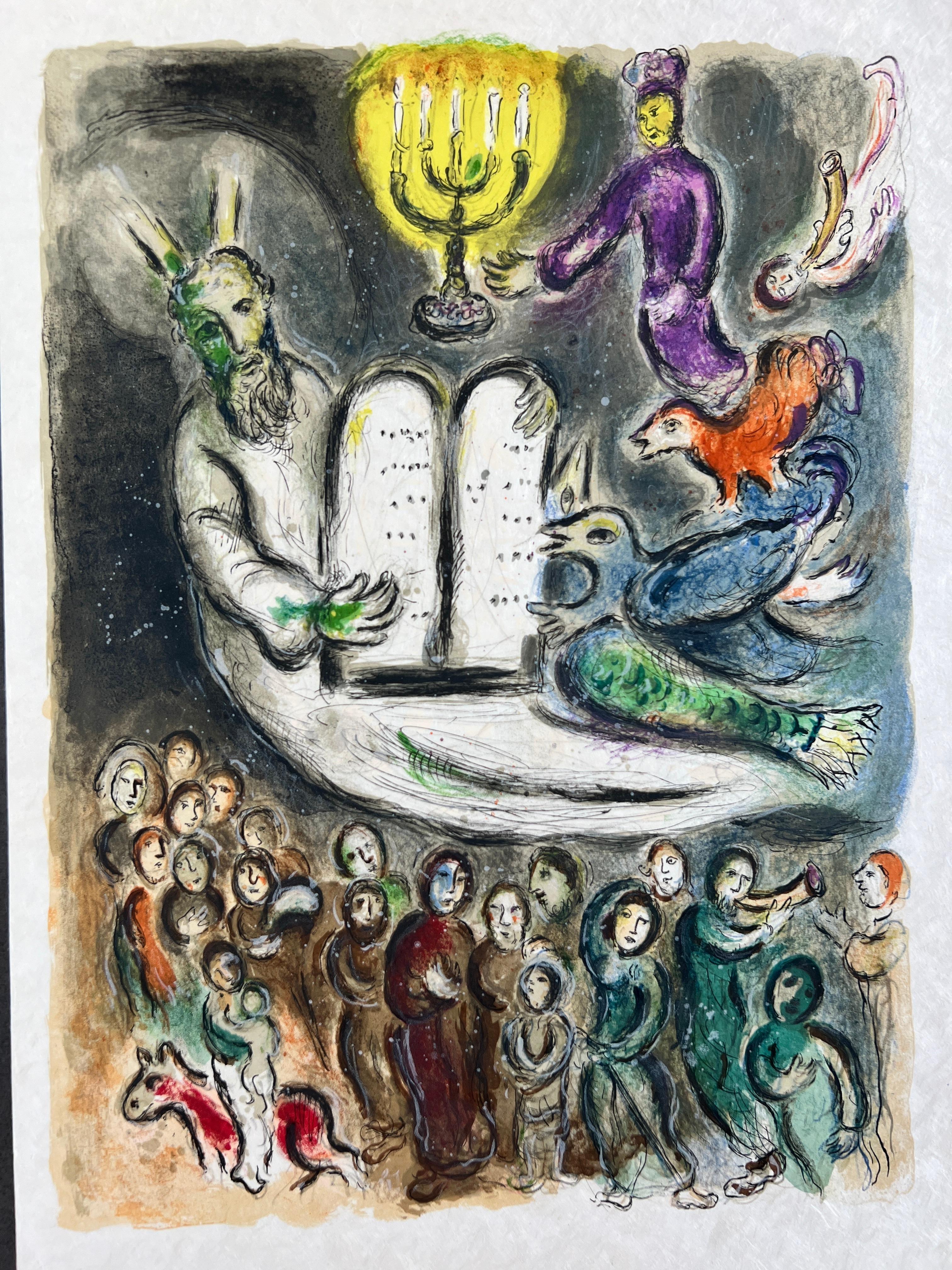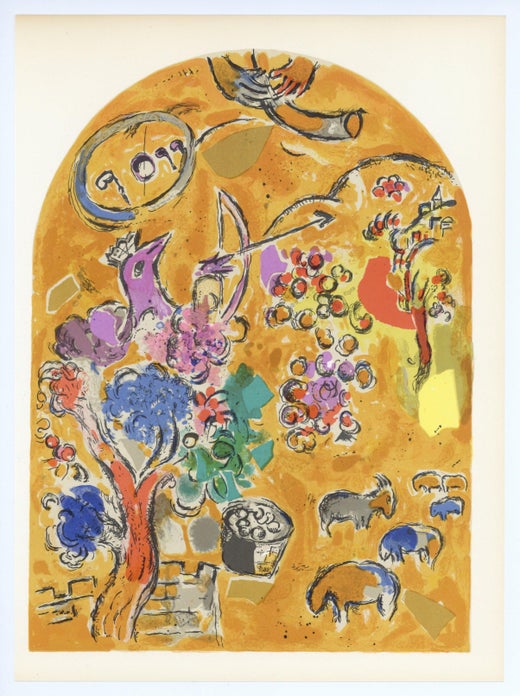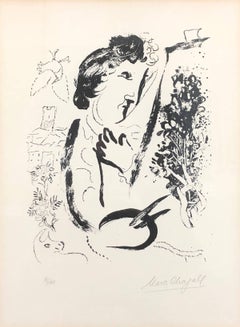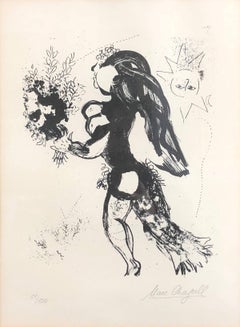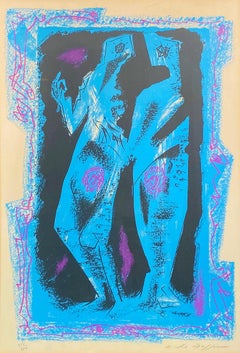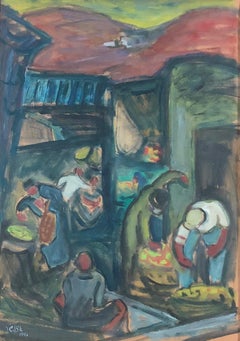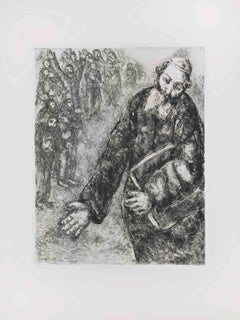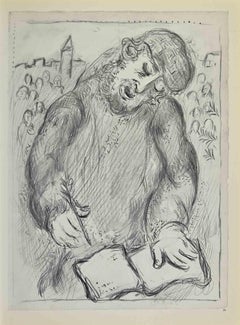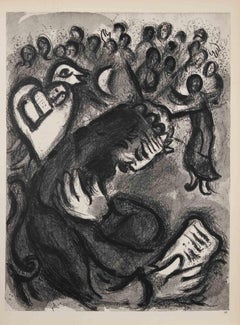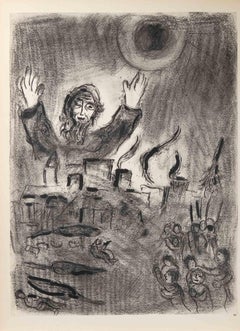Items Similar to Joshua Reads the Word of the Law (Pencil Signed)
Want more images or videos?
Request additional images or videos from the seller
1 of 9
(after) Marc ChagallJoshua Reads the Word of the Law (Pencil Signed)1938
1938
$4,000
£2,993.94
€3,459.53
CA$5,546.67
A$6,212.98
CHF 3,230.06
MX$76,717.79
NOK 41,148.40
SEK 38,899.41
DKK 25,816.93
Shipping
Retrieving quote...The 1stDibs Promise:
Authenticity Guarantee,
Money-Back Guarantee,
24-Hour Cancellation
About the Item
Signed in Pencil Lower Right "Marc Chagall"
Numbered Lower Left 77/275
Image Size: approx. 11 3/4 x 9 1/4 inches
Framed Size: approx. 24 x 21 inches
- Creator:(after) Marc Chagall (1887 - 1985, French, Russian)
- Creation Year:1938
- Dimensions:Height: 24 in (60.96 cm)Width: 21 in (53.34 cm)
- Medium:
- Movement & Style:
- Period:
- Condition:
- Gallery Location:Missouri, MO
- Reference Number:1stDibs: LU74732345141
(after) Marc Chagall
Marc Chagall was a renowned Jewish artist born July 7, 1887, in Vitebsk, Russia, who later moved to Paris and gained French citizenship. Chagall studied at the Imperial Society for the Protection of the Arts in Saint Petersburg. He was a member of the Ecole de Paris and was part of the Salon des Indépendants and the Salon d’Automne in the early 1900s. In addition to Paris and St. Petersburg, Chagall traveled and exhibited globally including Amsterdam, Jerusalem, and New York City. Having lived through World War I and World War II, his work was influenced by these events. Chagall’s work is inspired by his Jewish heritage and his hometown of Vitebsk and incorporates elements of Fauvism and Cubism as well as aspects of traditional Russian and Jewish folk art. His work has been exhibited and collected internationally both privately and by institutions including the Guggenheim, the Museum of Modern Art, Centre Pompidou, and Tate Modern.
About the Seller
5.0
Vetted Professional Seller
Every seller passes strict standards for authenticity and reliability
Established in 1970
1stDibs seller since 2017
154 sales on 1stDibs
Typical response time: 23 hours
- ShippingRetrieving quote...Shipping from: Missouri, MO
- Return Policy
Authenticity Guarantee
In the unlikely event there’s an issue with an item’s authenticity, contact us within 1 year for a full refund. DetailsMoney-Back Guarantee
If your item is not as described, is damaged in transit, or does not arrive, contact us within 7 days for a full refund. Details24-Hour Cancellation
You have a 24-hour grace period in which to reconsider your purchase, with no questions asked.Vetted Professional Sellers
Our world-class sellers must adhere to strict standards for service and quality, maintaining the integrity of our listings.Price-Match Guarantee
If you find that a seller listed the same item for a lower price elsewhere, we’ll match it.Trusted Global Delivery
Our best-in-class carrier network provides specialized shipping options worldwide, including custom delivery.More From This Seller
View AllDevant le Tableau (Signed and Numbered)
By Marc Chagall
Located in Missouri, MO
Lithograph on Arches Paper
Pencil Signed Lower Right, "Marc Chagall"
Numbered Lower Left Ed. 9/40, one of 40 impressions reserved for the artist aside from the standard signed editio...
Category
1960s Modern Figurative Prints
Materials
Lithograph
Price Upon Request
L'Offrande (Signed and Numbered)
By Marc Chagall
Located in Missouri, MO
Lithograph on Arches Paper
Pencil Signed Lower Right, "Marc Chagall"
Numbered Lower Left Ed. 51/100
Published by CH. SORLIER
SIte Size: 19 x 12.5
Framed Size: approx 27.5 x 22.5
Category
1960s Modern Figurative Prints
Materials
Lithograph
Price Upon Request
Deux Personnages
By André Masson
Located in Missouri, MO
Signed Lower Right
Numbered Lower Left 166/200
Framed Size: 33 x 25 inches
Andre Masson was born in Balagne, France on January 4, 1896. He was an engraver, sculptor, stage designer...
Category
1960s Modern Figurative Prints
Materials
Lithograph
Price Upon Request
The Village Market
By Jacob Eisenscher
Located in Missouri, MO
Jacob (Yaacov) Eisenscher
"The Village Market" 1947
Gouache/Watercolor on Paper
Signed and Dated Lower Left
Image Size: approx 18 x 12.5
Framed Size: approx 27 1/8 x 22 1/4 inches
...
Category
1940s Realist Figurative Drawings and Watercolors
Materials
Paper, Gouache
Price Upon Request
Gentleman Napping in a Chair (Possibly for Ichabod Crane or other Illustration)
By Everett Shinn
Located in Missouri, MO
Everett Shinn
"Gentleman Napping in a Chair" (Illustration)
Pen and Ink on Paper
Initialed "E.S." Lower Right
Displaying an early aptitude for drawing, coupled with a strong interes...
Category
Early 20th Century American Realist Figurative Drawings and Watercolors
Materials
Paper, Ink, Pen
Le Christ a l'Horloge, Paris
By Marc Chagall
Located in Missouri, MO
Marc Chagall
"Le Christ a l'Horloge, Paris" (Christ in the Clock) 1957 (M. 196)
Color Lithograph on Arches Wove Paper
Signed in Pencil "Marc Chagall" Lower Right
Initialed "H.C." (Hors Commerce) Lower Left, aside from numbered edition of 90
*Floated in Gold Frame with Linen Matting, UV Plexiglass
Sheet Size: 18 3/4 x 14 3/4 inches (47.5 cm x 38 cm)
Image Size: 9 3/4 x 8 1/2 inches
Framed Size: 28.5 x 24.25 inches
Marc Chagall was a man of keen intelligence, a shrewd observer of the contemporary scene, with a great sympathy for human suffering. He was born on July 7, 1887 in Vitebsk, Russia; his original name was Moishe Shagal (Segal), but when he became a foremost member of the Ecole de Paris, he adopted French citizenship and the French spelling of his name. Vitebsk was a good-sized Russian town of over 60,000, not a shtetl. His father supported a wife and eight children as a worker in a herring-pickling plant.
Sheltered by the Jewish commandment against graven images, the young Chagall never saw so much as a drawing until, one day, he watched a schoolmate copying a magazine illustration. He was ridiculed for his astonishment, but he began copying and improvising from magazines. Both Chagall's parents reluctantly agreed to let him study with Yehuda Pen, a Jewish artist in Vitebsk. Later, in 1906, they allowed their son to study in St. Petersburg, where he was exposed to Russian Iconography and folk art. At that time, Jews could leave the Pale only for business and employment and were required to carry a permit. Chagall, who was in St. Petersburg without a permit, was imprisoned briefly.
His first wife, Bella Rosenfeld, was a product of a rich cultivated and intellectual group of Jews in Vitebsk. Chagall was made commissar for the arts for the area, charged with directing its cultural life and establishing an art school. Russian folklore, peasant life and landscapes persisted in his work all his life. In 1910 a rich patron, a lawyer named Vinaver, staked him to a crucial trip to Paris, where young artists were revolutionizing art. He also sent him a handsome allowance of 125 francs (in those days about $24) each month. Chagall rejected cubism, fauvism and futurism, but remained in Paris. He found a studio near Montparnasse in a famous twelve-sided wooden structure divided into wedge-shaped rooms. Chaim Soutine, a fellow Russian Jew, and Modigliani lived on the same floor. To Chagall's astonishment, he found himself heralded as one of the fathers of surrealism. In 1923, a delegation of Max Ernst, Paul Eluard and Gala (later Salvador Dali's wife) actually knelt before Chagall, begging him to join their ranks. He refused.
To understand Chagall's work, it is necessary to know that he was born a Hasidic Jew, heir to mysticism and a world of the spirit, steeped in Jewish lore and reared in the Yiddish language. The Hasidim had a special feeling for animals, which they tried not to overburden. In the mysterious world of Kabbala and fantastic ancient legends of Chagall's youth, the imaginary was as important as the real. His extraordinary use of color also grew out of his dream world; he did not use color realistically, but for emotional effect and to serve the needs of his design. Most of his favorite themes, though superficially light and trivial, mask dark and somber thoughts. The circus he views as a mirror of life; the crucifixion as a tragic theme, used as a parallel to the historic Jewish condition, but he is perhaps best known for the rapturous lovers he painted all his life. His love of music is a theme that runs through his paintings.
After a brief period in Berlin, Chagall, Bella and their young daughter, Ida, moved to Paris and in 1937 they assumed French citizenship. When France fell, Chagall accepted an invitation from the Museum of Modern Art to immigrate to the United States. He was arrested and imprisoned in Marseilles for a short time, but was still able to immigrate with his family. The Nazi onslaught caught Chagall in Vichy, France, preoccupied with his work. He was loath to leave; his friend Varian Fry rescued him from a police roundup of Jews in Marseille, and packed him, his family and 3500 lbs. of his art works on board a transatlantic ship. The day before he arrived in New York City, June 23, 1941, the Nazis attacked Russia. The United States provided a wartime haven and a climate of liberty for Chagall. In America he spent the war years designing large backdrops for the Ballet.
Bella died suddenly in the United States of a viral infection in September 1944 while summering in upstate New York. He rushed her to a hospital in the Adirondacks, where, hampered by his fragmentary English, they were turned away with the excuse that the hour was too late. The next day she died.
He waited for three years after the war before returning to France. With him went a slender married English girl, Virginia Haggard MacNeil; Chagall fell in love with her and they had a son, David. After seven years she ran off with an indigent photographer. It was an immense blow to Chagall's ego, but soon after, he met Valentine Brodsky, a Russian divorcee designing millinery in London (he called her Fava). She cared for him during the days of his immense fame and glory. They returned to France, to a home and studio in rustic Vence. Chagall loved the country and every day walked through the orchards, terraces, etc. before he went to work.
Chagall died on March 28, 1985 in the south of France. His heirs negotiated an arrangement with the French state allowing them to pay most of their inheritance taxes in works of art. The heirs owed about $30 million to the French government; roughly $23 million of that amount was deemed payable in artworks. Chagall's daughter, Ida and his widow approved the arrangement.
Written and submitted by Jean Ershler Schatz, artist and researcher from Laguna Woods, California.
Sources:
Hannah Grad Goodman in Homage to Chagall in Hadassah Magazine, June 1985
Jack Kroll in Newsweek, April 8, 1985
Andrea Jolles in National Jewish Monthly Magazine, May 1985
Michael Gibson...
Category
1950s Modern Figurative Prints
Materials
Lithograph
Price Upon Request
You May Also Like
Joshua Reads the Words of the Law - Etching by Marc Chagall - 1956
By Marc Chagall
Located in Roma, IT
Etching on Montval wove paper, realized by Marc Chagall in 1931-39 and published by Tériade in 1956.
Belongs to the series "The Bible".
Edition of 275+30 out of commerce copies.
N...
Category
1950s Surrealist Figurative Prints
Materials
Etching
Ezra Teaches the People - Lithograph by Marc Chagall - 1960s
By Marc Chagall
Located in Roma, IT
Ezra Teaches the People is an artwork realized by March Chagall, 1960s.
Lithograph on brown-toned paper, no signature.
Lithograph on both sheets.
Edition of 6500 unsigned lithogra...
Category
1960s Surrealist Figurative Prints
Materials
Lithograph
$270 Sale Price
25% Off
Moses Recites the Commandments - Héliogravure by Marc Chagall - 1960
By Marc Chagall
Located in Roma, IT
Héliogravure on brown-toned paper, no signature.
Héliogravure on bot sheets, recto and verso.
Edition of 6500 unsigned copies. Printed by Mourlot and published by Tériade on the A...
Category
1960s Surrealist Figurative Prints
Materials
Photogravure
$180 Sale Price
25% Off
Joel, the Man with the Book- Héliogravure by Marc Chagall - 1960
By Marc Chagall
Located in Roma, IT
Héliogravure on brown-toned paper, no signature.
Héliogravure on bot sheets, recto and verso.
Edition of 6500 unsigned copies. Printed by Mourlot and published by Tériade on the A...
Category
1960s Surrealist Figurative Prints
Materials
Photogravure
$180 Sale Price
25% Off
"Moses with the Tablets of Law" original lithograph
By Marc Chagall
Located in Henderson, NV
Medium: original lithograph. Printed by Mourlot and published in Paris by Teriade for Verve in 1956 for a special edition devoted exclusively to Chagall's original Bible art. Size: 1...
Category
1950s Portrait Prints
Materials
Lithograph
Moses then came and called for the Elders of the people
By Marc Chagall
Located in OPOLE, PL
Marc Chagall (1887-1985) - Moses then came and called for the Elders of the people, and proposed unto them all these things, which the Lorde commanded him
Lithograph from 1966.
The...
Category
1960s Symbolist More Prints
Materials
Lithograph
